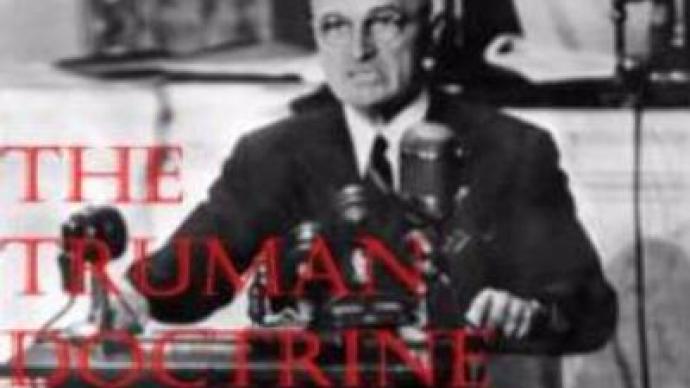60 years since Truman Doctrine

It is 60 years since the then U.S. President, Harry Truman, introduced a new foreign policy designed to contain Soviet aggression, marking the start of the Cold War.
“I believe that it must be the policy of the United States to support free peoples who are resisting attempted subjugation by armed minorities or by outside pressures,” President Truman stated 60 years ago and with those famous words the Cold War began. Addressing Congress, President Harry Truman stressed that Greece and Turkey needed economic and military support from the U.S. government or they would fall into the Soviet sphere. The new U.S. foreign policy became known as the Truman Doctrine, and turned two former World War II allies into bitter Cold War adversaries.“It was a dramatic turn of policy, it was night and day regarding the U.S. involvement in the world community after World War II,” says Gene Rossides from American Hellenic Institute. “The so-called Truman doctrine was a very important and even an outstanding decision of the American government of the past-Second World war period. Because first it was split the world on two major and confronting camps: the West and the Soviet Union,” believes Viktor Kremenyuk from the USA and Canada Institute at the Russian Academy of Sciences. While President Truman stressed the duty of the U.S. to combat totalitarian regimes worldwide, historians say the proclamation eroded relations between the U.S. and the Soviet Union, resulting in the Cold War.“U.S. felt that the challenge has been laid out by Stalin and the Communists world by trying to expand after WWII, instead of working together with certain spheres of influence, no they are trying to expand. So it suddenly was like a kickoff, and a major kickoff of the Cold War,” Gene Rossides stresses.The Truman Doctrine was the first in a series of containment moves by the U.S. to provide economic and military aid aimed at preventing the spread of communist influence. Although it began as a policy of aid, the Doctrine was followed by the Marshall Plan and a policy of military containment in Europe by the creation of NATO. Years later, the Doctrine became the rationale for U.S. involvement in the Vietnam and Korean Wars.“The Truman Doctrine started the proactive nature of U.S. policy around the world. Not necessarily to go into every spot and say hey, you have to have freedom or else. No, it was proactive in trying to support people, free peoples in order to support their economy,” Gene Rossides emphasizes. The Truman Doctrine continued to guide U.S. foreign policy for the next 40 years during the Cold War. But despite the collapse of the Soviet Union almost 16 years ago, the doctrine is still used as rationale today in the U.S., not to contain communist insurgency but to maintain democracy in the world.
You can share this story on social media:












